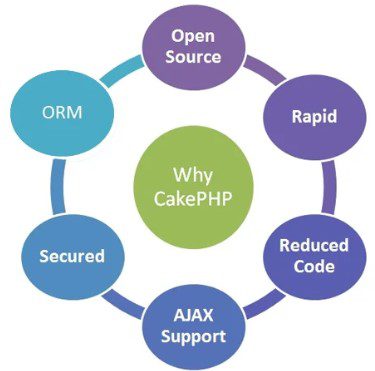In the dynamic realm of web development, frameworks play a pivotal role in streamlining the development process and enhancing productivity. Among the plethora of frameworks available, CakePHP stands out as a powerful and versatile tool for building robust web applications. With its comprehensive set of features and intuitive conventions, CakePHP has gained widespread popularity among developers worldwide.
What is CakePHP?

Cake PHP Development
Why Choose CakePHP?
What is CakePHP Good For?
CakePHP is a PHP web application framework that follows the model-view-controller (MVC) architectural pattern. It provides a structured and convention-based approach to developing web applications. Here are some aspects where CakePHP excels:
Rapid Development
CakePHP follows the convention over configuration (CoC) and don’t repeat yourself (DRY) principles, which allows developers to build applications quickly by reducing the need for boilerplate code. The framework comes with built-in features like scaffolding, code generation, and a set of conventions that speed up development.
MVC Architecture
CakePHP follows the MVC pattern, separating the application into three components: Model, View, and Controller. This separation enhances code organization, maintainability, and reusability.
Database Access Layer
CakePHP provides an Object-Relational Mapping (ORM) system called Eloquent, which simplifies database interactions. Developers can work with databases using high-level abstractions rather than writing raw SQL queries.
Built-in Security Features
CakePHP includes built-in tools for security measures, such as input validation, SQL injection prevention, and cross-site scripting (XSS) protection. These features help developers in creating more secure web applications.
Conventions
CakePHP relies on naming conventions, making it easy for developers to understand the structure of the application. This helps in maintaining consistency across projects and enables developers to quickly grasp the architecture of an unfamiliar CakePHP application.
Community and Documentation
CakePHP has an active community of developers and good documentation. This makes it easier for developers to find help, resources, and plugins/extensions when needed.
Flexible Templating
CakePHP uses a templating engine that allows for the separation of HTML and PHP code, making it easier to maintain and modify views.
RESTful APIs
CakePHP makes it straightforward to build RESTful APIs. It provides tools to easily expose your application’s functionality as a web service.
Testing Support
CakePHP supports unit testing and integration testing. This is crucial for maintaining code quality and identifying issues early in the development process.
Scalability
While no framework is a one-size-fits-all solution, CakePHP can be suitable for a range of projects, from small websites to large-scale applications, making it a versatile choice for developers.
In summary, CakePHP is good for developers who prioritize convention-based development, rapid prototyping, and want a framework that provides a solid foundation for building web applications with security features and a supportive community.
Conclusion
CakePHP stands as a powerful and versatile framework for building web applications of varying complexity. Its ease of use, robust architecture, and extensive community support make it an appealing choice for developers of all levels. Whether creating a simple blog or a sophisticated enterprise application, CakePHP provides a solid foundation for rapid and efficient web development.